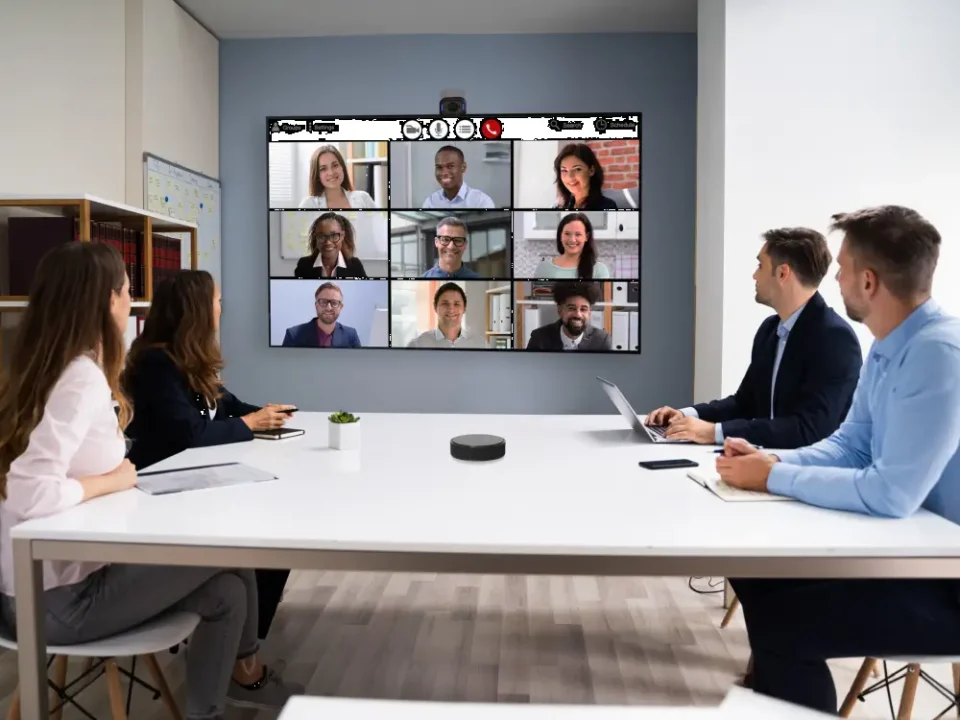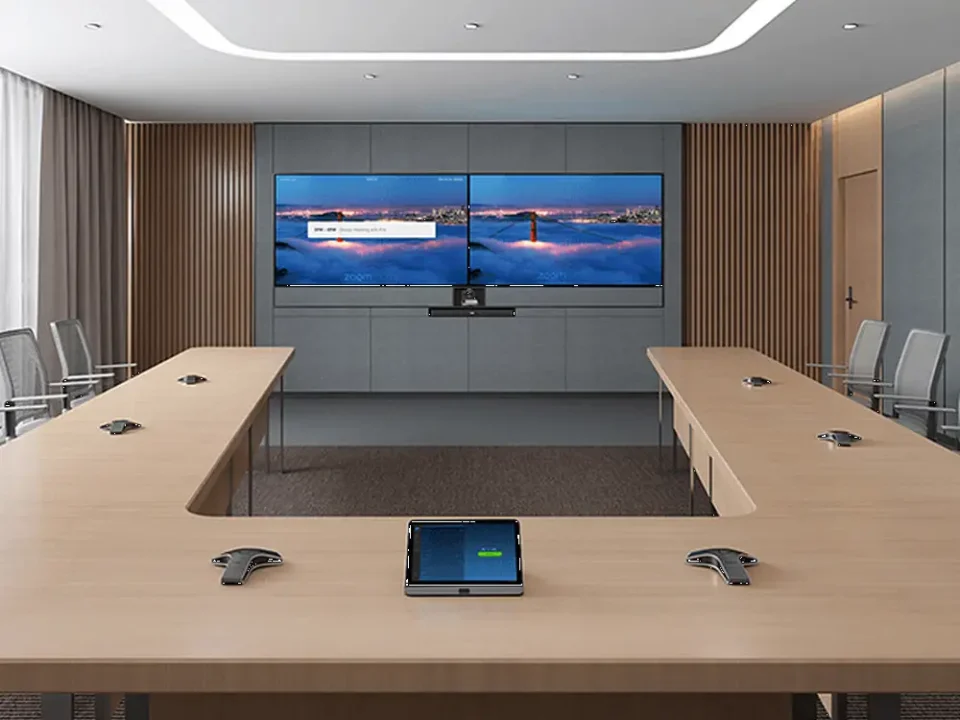In an increasingly interconnected world, video conferencing has emerged as a vital tool for communication, collaboration, and connectivity. As we navigate the challenges of a rapidly evolving digital landscape, the adoption of video conferencing technologies has become more prevalent than ever, transforming the way individuals, businesses, and organizations connect and collaborate. Against the backdrop of this global phenomenon, let’s explore the impact of video conferencing in Malaysia and its role in bridging geographical barriers, fostering innovation, and driving economic growth.
 Malaysia, a vibrant Southeast Asian nation known for its cultural diversity and thriving economy, has embraced video conferencing as a cornerstone of modern communication. With a growing emphasis on digital transformation and connectivity, Malaysian businesses and organizations have increasingly turned to video conferencing solutions to facilitate remote work, streamline operations, and enhance collaboration. From small startups to multinational corporations, video conferencing has become an indispensable tool for conducting meetings, training sessions, and client interactions, regardless of location or time zone.
One of the key benefits of video conferencing in Malaysia is its ability to bridge geographical barriers and facilitate seamless communication across borders. Whether it’s connecting with clients overseas, collaborating with remote teams, or conducting virtual events and conferences, video conferencing enables Malaysian businesses to expand their reach and global footprint without the constraints of physical distance. This level of connectivity not only enhances business opportunities but also fosters cultural exchange, knowledge sharing, and international collaboration, driving innovation and economic growth in Malaysia and beyond.
Malaysia, a vibrant Southeast Asian nation known for its cultural diversity and thriving economy, has embraced video conferencing as a cornerstone of modern communication. With a growing emphasis on digital transformation and connectivity, Malaysian businesses and organizations have increasingly turned to video conferencing solutions to facilitate remote work, streamline operations, and enhance collaboration. From small startups to multinational corporations, video conferencing has become an indispensable tool for conducting meetings, training sessions, and client interactions, regardless of location or time zone.
One of the key benefits of video conferencing in Malaysia is its ability to bridge geographical barriers and facilitate seamless communication across borders. Whether it’s connecting with clients overseas, collaborating with remote teams, or conducting virtual events and conferences, video conferencing enables Malaysian businesses to expand their reach and global footprint without the constraints of physical distance. This level of connectivity not only enhances business opportunities but also fosters cultural exchange, knowledge sharing, and international collaboration, driving innovation and economic growth in Malaysia and beyond.
 Moreover, video conferencing has played a pivotal role in enabling remote work and flexible work arrangements, particularly in light of the COVID-19 pandemic. With millions of Malaysians transitioning to remote work to comply with social distancing measures, video conferencing platforms have become essential tools for maintaining productivity, communication, and collaboration in a virtual environment. From virtual team meetings to online training sessions and client presentations, video conferencing has empowered Malaysian workers to stay connected and productive from the safety and comfort of their homes.
In addition to its business applications, video conferencing has also transformed the education sector in Malaysia, enabling students and educators to engage in remote learning and virtual classrooms. With the shift towards online education during the pandemic, video conferencing platforms have become invaluable tools for delivering lectures, facilitating discussions, and conducting interactive learning activities. Whether it’s connecting students with their peers and teachers or providing access to educational resources and experts from around the world, video conferencing has democratized access to quality education and empowered learners of all ages to pursue their academic goals.
Furthermore, video conferencing has emerged as a catalyst for innovation and entrepreneurship in Malaysia, fostering a vibrant ecosystem of startups, tech companies, and digital nomads. With access to global markets and talent pools, Malaysian entrepreneurs are leveraging video conferencing technologies to collaborate with partners, pitch to investors, and scale their businesses on a global scale. This spirit of innovation and entrepreneurship is driving Malaysia’s digital economy forward, creating new opportunities for growth, job creation, and prosperity in the years to come.
Moreover, video conferencing has played a pivotal role in enabling remote work and flexible work arrangements, particularly in light of the COVID-19 pandemic. With millions of Malaysians transitioning to remote work to comply with social distancing measures, video conferencing platforms have become essential tools for maintaining productivity, communication, and collaboration in a virtual environment. From virtual team meetings to online training sessions and client presentations, video conferencing has empowered Malaysian workers to stay connected and productive from the safety and comfort of their homes.
In addition to its business applications, video conferencing has also transformed the education sector in Malaysia, enabling students and educators to engage in remote learning and virtual classrooms. With the shift towards online education during the pandemic, video conferencing platforms have become invaluable tools for delivering lectures, facilitating discussions, and conducting interactive learning activities. Whether it’s connecting students with their peers and teachers or providing access to educational resources and experts from around the world, video conferencing has democratized access to quality education and empowered learners of all ages to pursue their academic goals.
Furthermore, video conferencing has emerged as a catalyst for innovation and entrepreneurship in Malaysia, fostering a vibrant ecosystem of startups, tech companies, and digital nomads. With access to global markets and talent pools, Malaysian entrepreneurs are leveraging video conferencing technologies to collaborate with partners, pitch to investors, and scale their businesses on a global scale. This spirit of innovation and entrepreneurship is driving Malaysia’s digital economy forward, creating new opportunities for growth, job creation, and prosperity in the years to come.
 In conclusion, video conferencing has become an integral part of Malaysia’s digital transformation journey, empowering businesses, educators, and entrepreneurs to connect, collaborate, and thrive in an increasingly interconnected world. By bridging geographical barriers, fostering innovation, and driving economic growth, video conferencing is shaping the future of communication and connectivity in Malaysia and beyond. As we continue to embrace the possibilities of video conferencing, the potential for collaboration, creativity, and progress knows no bounds.
In conclusion, video conferencing has become an integral part of Malaysia’s digital transformation journey, empowering businesses, educators, and entrepreneurs to connect, collaborate, and thrive in an increasingly interconnected world. By bridging geographical barriers, fostering innovation, and driving economic growth, video conferencing is shaping the future of communication and connectivity in Malaysia and beyond. As we continue to embrace the possibilities of video conferencing, the potential for collaboration, creativity, and progress knows no bounds.
 Malaysia, a vibrant Southeast Asian nation known for its cultural diversity and thriving economy, has embraced video conferencing as a cornerstone of modern communication. With a growing emphasis on digital transformation and connectivity, Malaysian businesses and organizations have increasingly turned to video conferencing solutions to facilitate remote work, streamline operations, and enhance collaboration. From small startups to multinational corporations, video conferencing has become an indispensable tool for conducting meetings, training sessions, and client interactions, regardless of location or time zone.
One of the key benefits of video conferencing in Malaysia is its ability to bridge geographical barriers and facilitate seamless communication across borders. Whether it’s connecting with clients overseas, collaborating with remote teams, or conducting virtual events and conferences, video conferencing enables Malaysian businesses to expand their reach and global footprint without the constraints of physical distance. This level of connectivity not only enhances business opportunities but also fosters cultural exchange, knowledge sharing, and international collaboration, driving innovation and economic growth in Malaysia and beyond.
Malaysia, a vibrant Southeast Asian nation known for its cultural diversity and thriving economy, has embraced video conferencing as a cornerstone of modern communication. With a growing emphasis on digital transformation and connectivity, Malaysian businesses and organizations have increasingly turned to video conferencing solutions to facilitate remote work, streamline operations, and enhance collaboration. From small startups to multinational corporations, video conferencing has become an indispensable tool for conducting meetings, training sessions, and client interactions, regardless of location or time zone.
One of the key benefits of video conferencing in Malaysia is its ability to bridge geographical barriers and facilitate seamless communication across borders. Whether it’s connecting with clients overseas, collaborating with remote teams, or conducting virtual events and conferences, video conferencing enables Malaysian businesses to expand their reach and global footprint without the constraints of physical distance. This level of connectivity not only enhances business opportunities but also fosters cultural exchange, knowledge sharing, and international collaboration, driving innovation and economic growth in Malaysia and beyond.
 Moreover, video conferencing has played a pivotal role in enabling remote work and flexible work arrangements, particularly in light of the COVID-19 pandemic. With millions of Malaysians transitioning to remote work to comply with social distancing measures, video conferencing platforms have become essential tools for maintaining productivity, communication, and collaboration in a virtual environment. From virtual team meetings to online training sessions and client presentations, video conferencing has empowered Malaysian workers to stay connected and productive from the safety and comfort of their homes.
In addition to its business applications, video conferencing has also transformed the education sector in Malaysia, enabling students and educators to engage in remote learning and virtual classrooms. With the shift towards online education during the pandemic, video conferencing platforms have become invaluable tools for delivering lectures, facilitating discussions, and conducting interactive learning activities. Whether it’s connecting students with their peers and teachers or providing access to educational resources and experts from around the world, video conferencing has democratized access to quality education and empowered learners of all ages to pursue their academic goals.
Furthermore, video conferencing has emerged as a catalyst for innovation and entrepreneurship in Malaysia, fostering a vibrant ecosystem of startups, tech companies, and digital nomads. With access to global markets and talent pools, Malaysian entrepreneurs are leveraging video conferencing technologies to collaborate with partners, pitch to investors, and scale their businesses on a global scale. This spirit of innovation and entrepreneurship is driving Malaysia’s digital economy forward, creating new opportunities for growth, job creation, and prosperity in the years to come.
Moreover, video conferencing has played a pivotal role in enabling remote work and flexible work arrangements, particularly in light of the COVID-19 pandemic. With millions of Malaysians transitioning to remote work to comply with social distancing measures, video conferencing platforms have become essential tools for maintaining productivity, communication, and collaboration in a virtual environment. From virtual team meetings to online training sessions and client presentations, video conferencing has empowered Malaysian workers to stay connected and productive from the safety and comfort of their homes.
In addition to its business applications, video conferencing has also transformed the education sector in Malaysia, enabling students and educators to engage in remote learning and virtual classrooms. With the shift towards online education during the pandemic, video conferencing platforms have become invaluable tools for delivering lectures, facilitating discussions, and conducting interactive learning activities. Whether it’s connecting students with their peers and teachers or providing access to educational resources and experts from around the world, video conferencing has democratized access to quality education and empowered learners of all ages to pursue their academic goals.
Furthermore, video conferencing has emerged as a catalyst for innovation and entrepreneurship in Malaysia, fostering a vibrant ecosystem of startups, tech companies, and digital nomads. With access to global markets and talent pools, Malaysian entrepreneurs are leveraging video conferencing technologies to collaborate with partners, pitch to investors, and scale their businesses on a global scale. This spirit of innovation and entrepreneurship is driving Malaysia’s digital economy forward, creating new opportunities for growth, job creation, and prosperity in the years to come.
 In conclusion, video conferencing has become an integral part of Malaysia’s digital transformation journey, empowering businesses, educators, and entrepreneurs to connect, collaborate, and thrive in an increasingly interconnected world. By bridging geographical barriers, fostering innovation, and driving economic growth, video conferencing is shaping the future of communication and connectivity in Malaysia and beyond. As we continue to embrace the possibilities of video conferencing, the potential for collaboration, creativity, and progress knows no bounds.
In conclusion, video conferencing has become an integral part of Malaysia’s digital transformation journey, empowering businesses, educators, and entrepreneurs to connect, collaborate, and thrive in an increasingly interconnected world. By bridging geographical barriers, fostering innovation, and driving economic growth, video conferencing is shaping the future of communication and connectivity in Malaysia and beyond. As we continue to embrace the possibilities of video conferencing, the potential for collaboration, creativity, and progress knows no bounds.

